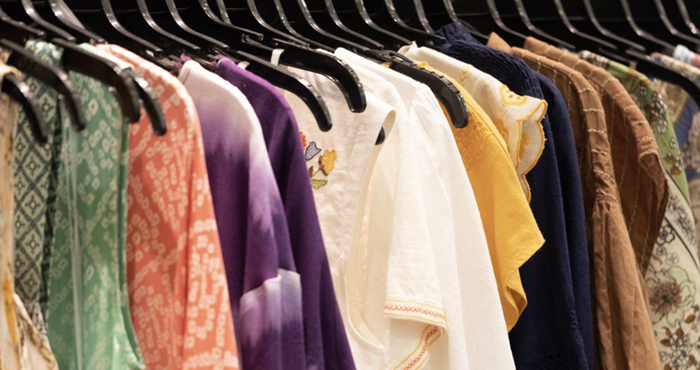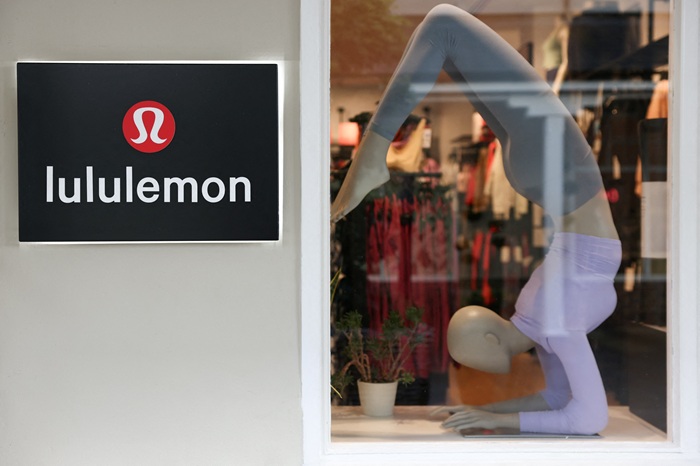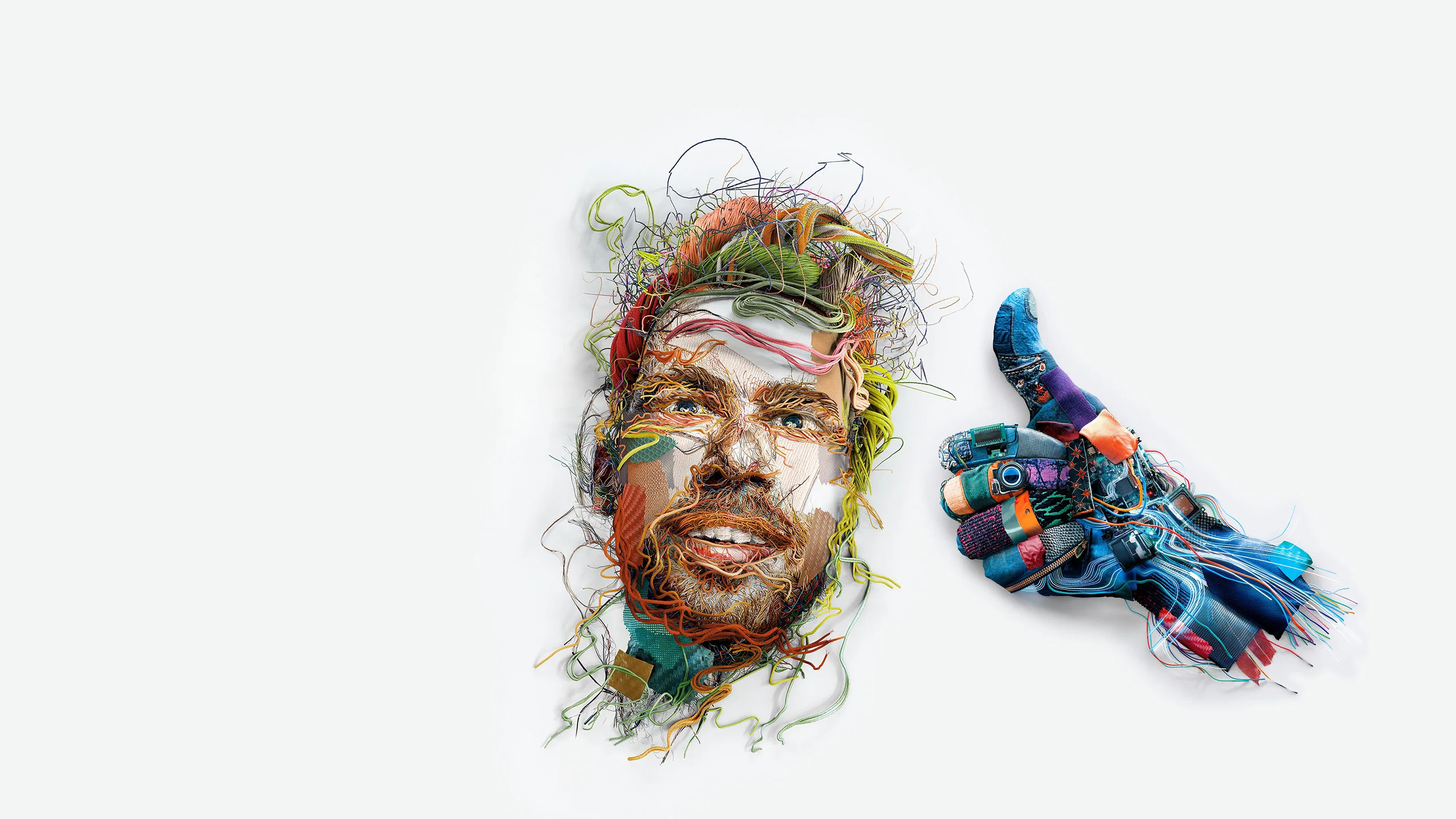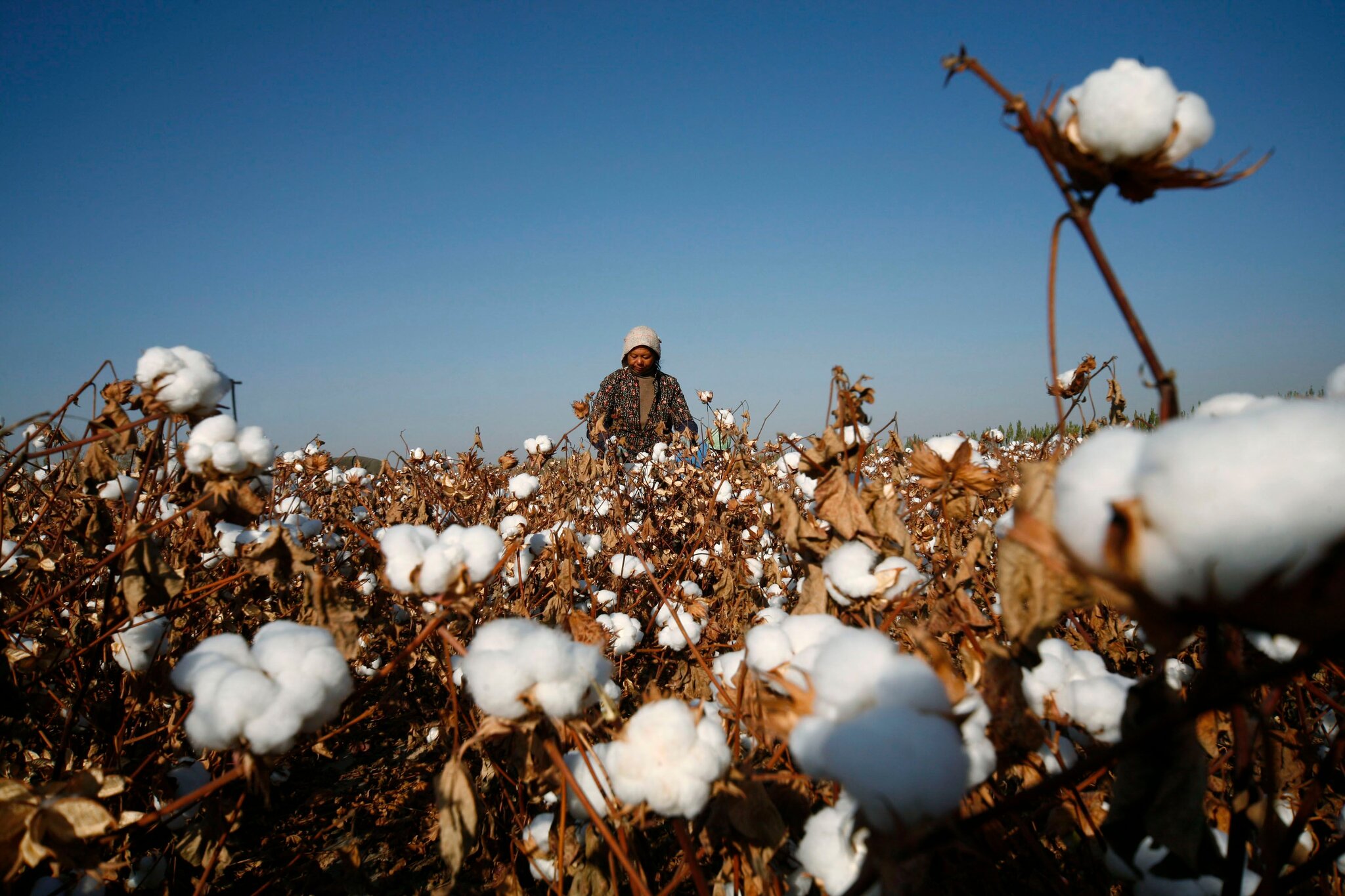FW
"The Rs 30,000 crores India’s denim fabric segment is expected to grow at 15 per cent per annum in the next five years. In fact, the segment is already keeping this growth pace and will continue at the same speed in the next five years to touch Rs 54,600 crores by 2023, said experts at the 32nd IAF World Fashion Convention. The 32nd IAF convention that ended in Mumbai yesterday held a session on the denim sector ‘New Opportunities in Denim’."

The Rs 30,000 crores India’s denim fabric segment is expected to grow at 15 per cent per annum in the next five years. In fact, the segment is already keeping this growth pace and will continue at the same speed in the next five years to touch Rs 54,600 crores by 2023, said experts at the 32nd IAF World Fashion Convention. The 32nd IAF convention that ended in Mumbai yesterday held a session on the denim sector ‘New Opportunities in Denim’.
Indian denim market in focus
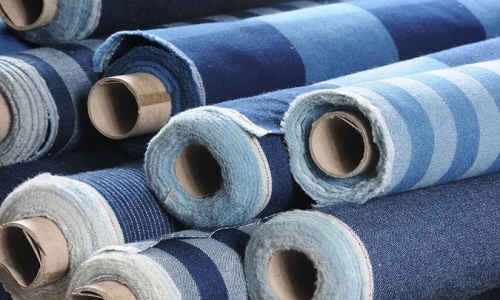
Moderated by Harminder Sahni, MD Wazir Advisors the session focused on the denim industry in India and the segments and layers now divided over price and demographics. Deval Shah, Business Head-Diesel & GAS, Reliance Brands said “Denim revolution started in India in 80s and 90s from simplicity which gradually shifted to lifestyle and more so fashion of late. India continues to be one of the largest producers of denim in the world. India has 0.3 jeans as per capita consumption against 2-3 pairs of jeans in advanced world and 7 pairs in US with 96 per cent of Americans wearing jeans in the US.”
“With growing demand for denim fabric from Bangladesh, to which India exports a huge quantity, the Indian denim industry saw a huge jump in manufacturing capacity which doubled to 1.3 billion meters per annum over the last five years. The number of denim manufacturers too has gone up to around 40 now. However, around 30 per cent of this capacity generally remains idle currently due to excess production capacity. The Rs 30,000 crores denim industry is likely to face a shortage of fresh investment in the next five years” points out Subir Mukherjee, Business Head (Denim), Bhaskar Industries “India is selling cheapest pair of jeans not available anywhere in the world. If we bring down the price of jeans to $10 apiece as is currently prevailing in the US, India’s denim demand would increase resulting in this sector’s growth at 20 per cent per annum.”
In fact, Myntra has most of their sales coming out of value segment jeans between Rs 999 and Rs 1,299 a piece. And as Asthana points out online retailers do not require to incur cost on retail but a massive cost they incur on technology and last mile delivery. At Myntra for example, 60 per cent manpower is involved in the technology while the rest on other aspects of business. Asthana said the online labels created by Myntra will soon be seen in brick and mortar stores as well. “I agree that e-commerce players are in position to play big and increase the per capita consumption by promoting jeans at lower costs,” he explained.
Arguing on similar lines Claudio Grotto, Chairman GAS jeans, who looks at jeans not as the market segmentation but as a subject driven by passion said, he doesn’t look at jeans from a price perspective, while creating it, “for me the objective is that it should be a good fashionable jeans. I had been making and working on jeans for many years, even before launching GAS. Even now, I visit my shops and to know what they like, for me connect with people is very important. Be it USA, Europe or anywhere in the world, jeans only change in size and nothing else,” he opined.
Domestic brand Spykar’s director and COO Sanjay Vakharia believes lower segment of denim is growing rapidly. But, there is a need to bring cheaper segment of denim for consumers in the bottom of the pyramid. However, for Spykar as a brand selling cheap jeans in not an option as they are into retail and retail costs are high in India. “I feel it is not question of international brand or an Indian brand, over the years even international brands have also become as Indian as we are. The incoming of super premium brands like Diesel and GAS will only help our market bar to raise specially in terms prices as when GAS sells a jeans at Rs 8,000 onward, suddenly a jeans of Spykar at Rs 4,000 doesn’t look as expensive”.
Organised jointly by the International Apparel Fashion (IAF) and the Clothing Manufacturers’ Association of India (CMAI), the two-day convention was supported by the Union Ministry of Textiles and Union Ministry of Commerce. It saw the participation of all leading brands in apparel and denim sectors with over 300 delegates from India and across the world.
India’s exports of bedspreads, in value terms, have seen a phenomenal rise in the last decade. Shipments of bedspreads from India in 2015 were 70 per cent of world exports during the same period. However, major exports from India are still coming from the unorganised sector. Bedspreads are a significant foreign exchange earner for the country. It is one of the few export products where China lags behind India. While China specialises only in machine-made items, India does both machine and handmade items.
With regards to availability of raw material, India is self-reliant. However, a lot of technology upgradation in textile mills is needed – for example in the quality of fabrics used, quality of velvet or cotton. In the case of silk, it’s imported from China, hand worked on domestically, and then made export-ready. Hence there is a need to improve the quality of fabrics used. The recently-announced Rs 6,000 crore special package for the textile and apparel sector may be of help.
Manufacturers feel FTAs, such as an agreement with the EU, will boost exports. They believe the Amended Technology Upgradation Fund Scheme is a good scheme but has to be properly implemented. GST is also seen as helping to minimise costs on many fronts.
Workers at garment factories in India producing for Dutch fashion brands are exploited, says Clean Clothes Campaign the India Committee of the Netherlands. While the living wage for workers in India is about Rs 19,000, more than a third of these workers are paid less than Rs 7,500. These factories produce garments for Dutch brands such as C&A, Coolcat, G-Star, McGregor, MEXX, Scotch & Soda, Suitsupply, Mills Brothers, Hallinger and WE Fashion.
There are about 10 such factories, in South India. The garments they make are bought by Dutch consumers, who often don’t know about the sweatshop conditions workers are made to toil in. Brands are not transparent about where their garments are made. Most workers cannot properly support their families with this wage. Food and housing, usually a one-room apartment without water tap, with a shared toilet outdoors, are the biggest expenses. Almost everyone would like to buy healthier and more varied food, but is unable to do that because of low wages.
Almost 80 per cent of garment factory workers are women, who are more docile than men. When pregnant, they are often pressured to resign. Women with children are discouraged from working.
Two US companies, Denim North America (DNA) and Martex, have jointly launched a sustainable denim collection. At its dyeing and weaving facility, DNA has implemented environmentally responsible manufacturing practices to reduce carbon dioxide emissions, recycle waste to reduce landfill requirements, recover 50 per cent of its process chemicals for reuse and recycle 90 per cent of its process water in a continuous loop system. The weft in the denim comprises recycled-content ECO2 cotton yarn produced by Martex.
ECO2 cotton is made using cutting waste collected by Martex from US, Mexican and Central American cotton knit apparel production facilities. Martex sorts that waste by color and source, and refiberises the material, using a mechanical process that does not use process chemicals or water. The resulting fibers are blended with manmade fibers and spun into yarn. The yarns are available in more than 50 stock colors and different colors can be plied to produce additional colors.
The first of these denim fabrics contain ECO2 cotton yarn comprising pre-consumer T-shirt waste and polyester in a 70 to 75 per cent cotton-rich blend. The recycled content in each pair of such jeans is equal to two cotton T-shirts. DNA is looking to increase the recycled content in future fabrics.
The N Brown Textiles Growth Program is investing in UK manufacturing. It gives grants whereby companies can invest in new technology and equipment. Since the start of the program in 2014, 237 companies have been supported by the Textiles Growth Program, creating and safeguarding nearly 3,500 jobs and securing 87 million pounds of private sector investment through 20 million pounds of grant support.
After the Brexit vote, the textile industry is still showing the confidence to invest which is a healthy indicator that the sector is still growing. This is helped, in part, by government funding, and a strategy to invest in this industry.
One of the beneficiaries of the program has been TBA Textiles, a leading yarn manufacturer, supplying over 100 countries across sectors including construction, marine and transportation.
TBA will use the funding to secure its position at the forefront of the development and manufacture of high performance technical textiles. The funding will additionally allows TBA to invest in its local and wider community in the form of new job opportunities and apprenticeships. The company is planning to invest into its own manufacturing plant over the next two years. The investment marks a return to British roots for the business, which in recent years outsourced part of its production to the Netherlands.
Rising cost of doing business in the last several years has not only stalled fresh investment in Pakistan’s textile industry but has also hampered export growth and turnover. This was stated by the newly-elected chairman of Pakistan Textile Exporters Association (PTEA) Ajmal Farooq during the annual general meeting of the Association. The government should devise a comprehensive strategy to counter the issue in order to accelerate the industrial pace and also to save livelihood of millions of workers, he observed. The meeting was presided over by Asghar Ali, Chairman of PTEA and attended by a large number of exporters.
Addressing members, Farooq said in the prevailing economic conditions, rising cost of production was the core issue for textile exporters. Pakistani exporters are under pressure due to prevailing economic financial, industrial crisis in the country as well as persistently high cost of production, heavy burden of taxes and high energy cost which are badly affecting the industrial and trade activities and productivity output.
Expressing concern over continuous downfall in country's exports, he said that Pakistan's share in the world textile and clothing trade of an estimated $718 billion has plunged to 1.7 per cent from 2.2 per cent less than a decade ago, with regional rivals capturing a greater market share. Bangladesh's share has increased from 1.9 per cent to 3.3 per cent and India's went up from 3.4 per cent to 4.7 per cent during the same period. He emphasised unity of textile sector to enforce the government to focus on consolidation and strengthening of economy and uplifting the industrial productivity in the country.
Addressing on the occasion, newly-elected vice chairman of the Association Muhammad Naeem assured that no stone will be left unturned for promotion of exports and industry. Problems of exporters will be taken at all possible levels and efforts will be done to get solved the issues, he remarked.
Factories in Vietnam that are a part of the Better Work program have better working conditions for employees are up to eight per cent more profitable than their counterparts. The Better Work program works to improve working conditions and promote competitiveness in global garment supply chains.
The average firm enrolled in the program, which focuses on preventing the use of insecure or unprotected contracts that leave workers in a precarious employment situation, increases its revenue to cost ratio by 25 per cent after four years of involvement.
The proportion of Better Work factories operating excessive overtime fell from 90 per cent at the outset to 50 per cent by the fifth year. Employees in Vietnam reported working 55 hours a week by the fifth year of their factory’s participation in Better Work, down four hours a week from the baseline.
Workers at Better Work factories in Vietnam have seen rising weekly pay (independent of the minimum wage) and are now less concerned with excessive overtime and poor wages than they were five years ago. Moreover some 15 per cent of garment factories covered by Better Work did not comply with minimum wage requirements at the beginning but this fell to just three per cent by their fifth year into the program.
Fashion-conscious consumers have changed their purchasing behaviour. Today, it is not only the look that matters but also comfort is important. The softness of the textile is an important parameter for comfortable clothing. In fact, softness is a basic pre-requisite for comfortable clothing. The softness has to be perceived by the wearer to trigger the decision to purchase the garment.
Austria-based Lenzing AG, whose main business is making textile and nonwovens, cellulose fibers and some polymer plastics, is presently demonstrating its innovative expertise and presenting a new method to measure softness of clothing along with German instrument manufacturers Emtec Electronic.
How people perceive softness is, something that differs from person-to-person and is determined by how the textile and the skin interact. To explain the complex process of softness in textiles and at the same time exclude personal preferences, physical measurement methods were developed to make softness ‘visible’. These methods are well known in the scientific world. However, they are highly complex.
A group, specially formed at Lenzing Research, devotes its research to physiological properties, searched for easier methods to measure softness. In the search for existing measuring methods to test softness, the team examined related industries and found an interesting instrument that appeared suitable to measure the softness of textiles.
The device is well-known in the paper towel industry and measures the softness of different products in this field. More than 100 fabrics were used for the test on Lenzing fibres to see whether this device can be used for textiles and following an intensive test phase, the team approached Emtec Electronic to share their results and arrange co-operation on further tests. Using the softness measuring device from Emtec Electronic and the well-known ring method, it is possible to show that the higher the amount of Lenzing Modal® used in the textile, the softer it becomes. The test result itself shows that MicroModal® is the softest fibre of all the fibres tested. The test method should quickly depict the degree of softness of fabrics with Lenzing Modal to help customers communicate softness at the time of sale.
In its bid to cut labour costs and secure its future, Japan's apparel industry is turning to state-of-the-art technology from ready-to-wear knits manufactured instantly to customised dresses produced on inkjet printers. At manufacturing giant Shima Seiki's factory in western Japan, garments materialise in minutes, thanks to digitally-programmed automated machines that can turn out a sample seam-free pullover in half an hour with a push of a button.
The WholeGarment system patented by the Japanese manufacturer and sold to knitwear companies like Italian luxury brand Max Mara includes a digital design system that allows users to choose patterns, colours and cuts. Originally known for glove-making machinery, Shima Seiki took a technological leap in the 1990s in an effort to revive the flagging fortunes of Japanese apparel manufacturers.
The WholeGarment system allows a worker to operate 10 machines thereby lowering labour costs and uses limited raw material to create lagu kokoronotomo versi Indonesian seam-free garments that generate no waste, since they require no cutting or sewing. After a slow start that saw around a dozen brands from Japan and Italy sign up in the first year, has some 800 companies using the same. Of these nearly half of them are Japanese who have jumped on board, contributing to Shima Seiki's 60 per cent share of the global market for knitting machines. The initiative is part of a push by Japan's knitwear industry to capitalise on its technical know-how to create garments that cannot be replicated elsewhere at a lower cost.
Oerlikon wants to prepare customers for the future of manmade fiber production. This will ultimately result in improved yarn quality environmentally-compatible and sustainable production processes. With the 4.0 system producers can maintain a constant overview of all processes – from the poly condensation, spinning and texturing all the way through to downstream further processing procedures. This helps clients increase the productivity of their systems, save energy and deploy resources efficiently.
The Oerlikon Manmade Fiber segment comprises two brands: Oerlikon Barmag and Oerlikon Neumag. With its many years of expertise in complex production systems engineering, Oerlikon Barmag focuses on continuous polymerization, pre oriented yarn, fully drawn yarn, industrial yarn as well as tape and monofilament products and services.
Oerlikon Neumag is the leading supplier of technologies and plants within the global staple fiber market. Customers benefit from the best technology and process solutions for their specific requirements – for high-quality fibers from a single source. For the nonwovens (spun bond, melt blown and air laid) sector, Oerlikon Neumag has the new, multifunctional forming table. The melt blown system is characterized by its considerably reduced footprint. The resulting shortened wire length reduces maintenance costs. It is horizontally movable, multiply-segmented and offers individually-adjustable suction boxes. This enables extremely flexible formation and hence increased product diversity.



